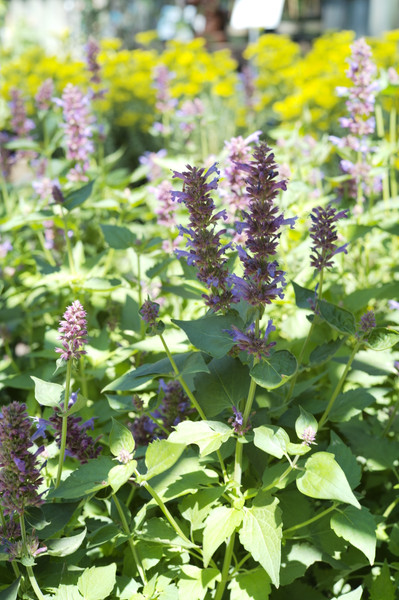Nepeta
Posted by Aaron Barton on Mar 4th 2023
Nepeta (Catmint)
As the heat of summer approaches, delicate periwinkle blue hues dot the landscape, dancing with an entourage of bumblebees, hummingbirds, and countless other visitors, providing the perfect example of why Nepeta, or catmint, a close relative of catnip, is a Midwest garden staple.
A widespread genus of over 250 species, Nepeta are native to regions of Europe, Asia, and Africa, and are naturalized in North America. The most beloved cultivars of Nepeta, however, are of the garden hybrid Nepeta x faassenii (NEP-eh-tuh fah-SEN-ee-eye), known somewhat confusingly as Faassen’s catnip, after J.H. Faassen, a Dutch grower who developed the first catmint hybrids. These hybrids are of the parent species Nepeta racemosa, or dwarf catnip, native to the Caucasus, Turkey, and Iran, and Nepeta nepetella, or lesser catmint, native to France, Spain, Italy, Algeria, and Morocco. Belonging to the mint family, Lamiaceae, catmint has characteristic square stems and wonderful aromatic foliage.
Beloved for its aromatic icy blue-grey foliage and sea of delicate blooms, catmint is a low-growing herbaceous perennial with fuzzy, dusty green leaves, maturing to a low, sprawling clump 12-24” tall and 24-36” wide. Abundant spires of two-lipped flowers blanket catmint in a cloud of violet-blue from early to mid-summer, the signature appearance of the crowd favorite ‘Walker’s Low’ catmint. Immediately after blooming, trim back Nepeta to encourage bushier growth and promote reblooming. Alternative appearances are also available, including the massive dense lilac purple blooms of ‘Whispurr Blue’ and cheery light pink blooms of ‘Whispurr Pink.’
For those looking for a tidier, more compact habit, cultivars of dwarf or Persian catnip, Nepeta racemosa (NEP-eh-tuh ray-see-MO-suh) provide the same beautiful look of other popular Nepeta hybrids at a modest size of about 12-18” tall and wide, including ‘Little Titch’ and ‘Picture Purrfect.’
Ideal for cottage style gardens, rock gardens, trailing over retaining walls, foundation plantings, low sunny borders, or even massed as a sunny groundcover, catmint thrives in well-drained soils and is exceptionally drought and salt tolerant once established. Though Nepeta prefers full sun conditions, it will also thrive in part sun exposure as well, and thanks to its aromatic foliage, catmint is not subject to deer or rabbit browsing.
Happy planting!

